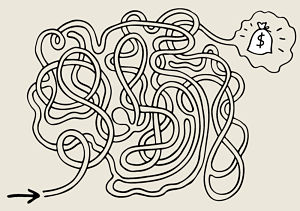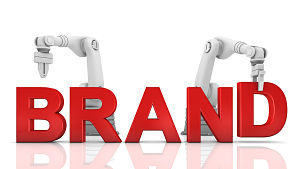Does being negative generate positive results?
March 2, 2021

In last week’s column, we looked at why so many of the political ads take an aggressive, negative stance rather than exalting the candidate’s platform, past performance or beliefs. The data shows that the negative ads are effective, so we endure them every year through the election cycle.
But what about using negative ad tactics for nonpolitical advertising? Does it still work? The data is far less conclusive. We expect political candidates to trash-talk their competitors, but it seems like we have a different standard for brands. People are drawn to brands that they can connect with and that share some of their same core values. In general, we hope our marketing builds a bond that makes our consumers proud to buy what we have to sell.
In the ideal world, they feel as though using our product or service says something about them.
For example, when Dawn started promoting that it was the product used to save/clean up animals after an oil spill, it was a game changer for them.
Their campaign Dawn Saves Wildlife achieved the highest ROI of any commercial in the home care industry and scored them an off-the-charts consumer equity index score of 168.
We love brands we can love and connect with, and we love it when our dollars support something we believe in. Despite that, taking a negative approach can be effective if it’s done well. The nuance here is that it can’t be vicious or mean-spirited, like political ads.
Here are some ways you can generate positive reactions to a negative campaign.
Taking on your competitor: If you’re going to go head to head with a competitor and either name them explicitly or make it clear who you’re talking about, you need to tread carefully. Using humor or a lighter tone will soften the audience’s reaction to your attack. We’ve seen this in the mobile phone space. With quirky characters and catchphrases, they poke at their competitors, but with a light touch.
Take on an issue: Another way to put a positive spin on a negative is to point out a risk or social issue. We see medical commercials and nonprofits paint a grisly picture (like those sad, abused dogs in the SPCA spots) and then give us an opportunity to help right the wrong or avoid the symptom or disease. The power of these negative spots is that we can do something to avoid or fix what is broken.
Show what might happen: There are plenty of spots that use this strategy of showing us the consequences if we fail to take action or if we make the wrong choice. Political ads take this to an extreme, but many brands go down this path as well. The Rid-X spot that shows how a little girl’s garden party birthday was ruined because her dad didn’t use Rid-X is a perfect example of this strategy.
As you consider using one of these negative strategies, be mindful of your brand. It has to be authentic and in alignment with your organization’s values. Not every brand can step into this negative space and pull it off. Beyond your brand, you have to think about your audience as well. Some are going to embrace that negative tone, and others are going to find it off-putting.
Really smart marketing communicates and resonates. It not only tells the audience who we are, but it tells them how we are a good fit for them.
Keeping that in mind as you explore using one of these negative-toned strategies will help you decide which one, if any, is a good choice for creating a connection that will hopefully lead to ongoing sales and brand loyalty.
This was originally published in the Des Moines Business Record, as one of Drew’s weekly columns.
More
 As a writer just typing the question – is creativity bad for marketing – hurts a little.
As a writer just typing the question – is creativity bad for marketing – hurts a little. I was recently contacted by a college student who asked if he could interview me for one of this classes. One of the questions he asked is one I get a lot, so I thought I’d share my answer with you here.
I was recently contacted by a college student who asked if he could interview me for one of this classes. One of the questions he asked is one I get a lot, so I thought I’d share my answer with you here.
 Normally at MMG, we caution clients to be careful of the “I don’t listen/watch/do therefore neither does my target audience” trap.
Normally at MMG, we caution clients to be careful of the “I don’t listen/watch/do therefore neither does my target audience” trap.













 According to the most recent statistics, 3 bazillion QR codes are scanned every minute. (Okay, maybe I’m off by a half bazillion but you get the idea) And truth be told… most of the destinations suck.
According to the most recent statistics, 3 bazillion QR codes are scanned every minute. (Okay, maybe I’m off by a half bazillion but you get the idea) And truth be told… most of the destinations suck.